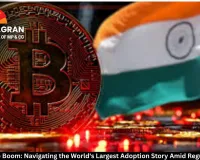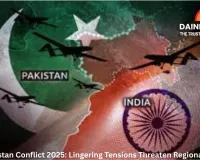Beyond Colonial Shadows: Can Asia Forge Its Own Path to Peace and Prosperity?
Digital Desk

From the India-Pakistan border to the South China Sea, Asia remains a continent simmering with conflicts. While many nations have achieved political freedom, true geopolitical autonomy—the ability to chart their own economic futures and exist as a zone of peace—remains elusive. A critical question arises: why does Asia, despite its immense potential, struggle with instability, and can it ever break free to define its own destiny?
The roots of today's tensions are often buried in a colonial past. Arbitrary borders drawn by European powers, like the Durand Line dividing Afghanistan and Pakistan or the Sykes-Picot agreements in West Asia, created nations fraught with internal ethnic and sectarian divisions.
These manufactured fault lines continue to fuel identity crises and territorial disputes. Furthermore, the present-day involvement of Western powers, often justified under the banner of promoting democracy or strategic interests, frequently exacerbates these conflicts rather than resolving them, creating a dependency that hinders true autonomy.
This stands in stark contrast to the trajectory of Europe. After the devastation of two World Wars, European nations consciously chose integration. Starting with economic cooperation on coal and steel—the very foundations of industrialization—they built the European Union, a project underpinned by the idea that complex economic interdependence and shared security architectures (like NATO) make war less likely. If former arch-enemies like France and Germany can share a parliament, why can't Asian nations find a similar path?
The challenge in Asia is its staggering diversity and the deep-seated nature of its rivalries. From the ideological standoff on the Korean Peninsula and the expansionist pressures from China to the sectarian divides in West Asia and historical animosities in South Asia, the hurdles are significant. The concept of a single "Asian identity" is still distant.
However, the path forward lies not in replicating the EU model exactly, but in learning from its principles. The key is fostering deeper economic integration.
Increasing intra-Asia trade, which is already significant in intermediate goods, creates mutual stakes in stability. If nations are economically intertwined, the cost of conflict becomes prohibitively high.
Simultaneously, Asia must strengthen its regional institutions like ASEAN and the SCO. These platforms need to be empowered to develop dedicated codes of conduct for conflict-prone areas like the South China Sea and establish permanent conflict management centers to facilitate uninterrupted dialogue.
The imperative for peace is not just regional but global. Asia is the world's manufacturing hub and a critical node in global supply chains, from semiconductors in Taiwan to pharmaceuticals in India. A major conflict in Asia would trigger an immediate worldwide economic crisis.
Ultimately, Asia's journey to becoming a zone of peace and prosperity is not a fantasy. It is a necessity. By consciously building economic interdependence, strengthening home-grown institutions, and managing its complex legacy with sustained dialogue, Asia can shed the weight of its colonial past and external manipulations. The continent has the resources and the rationale; what it needs is the collective political will to forge its own autonomous future.











